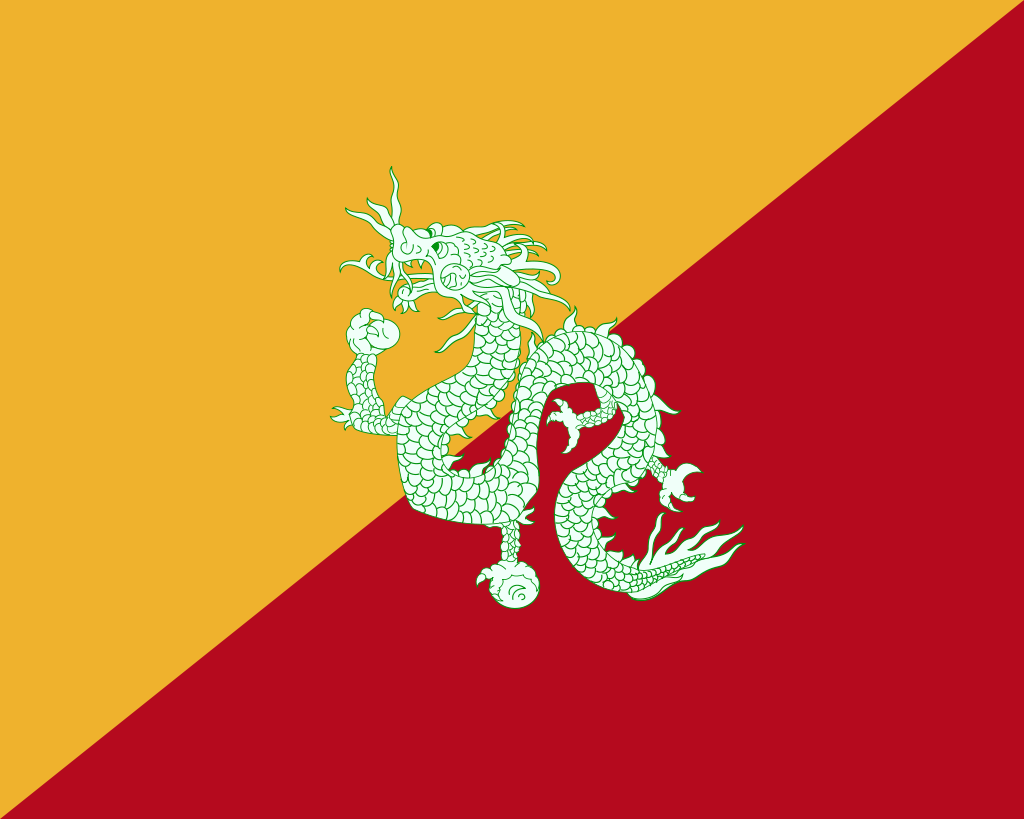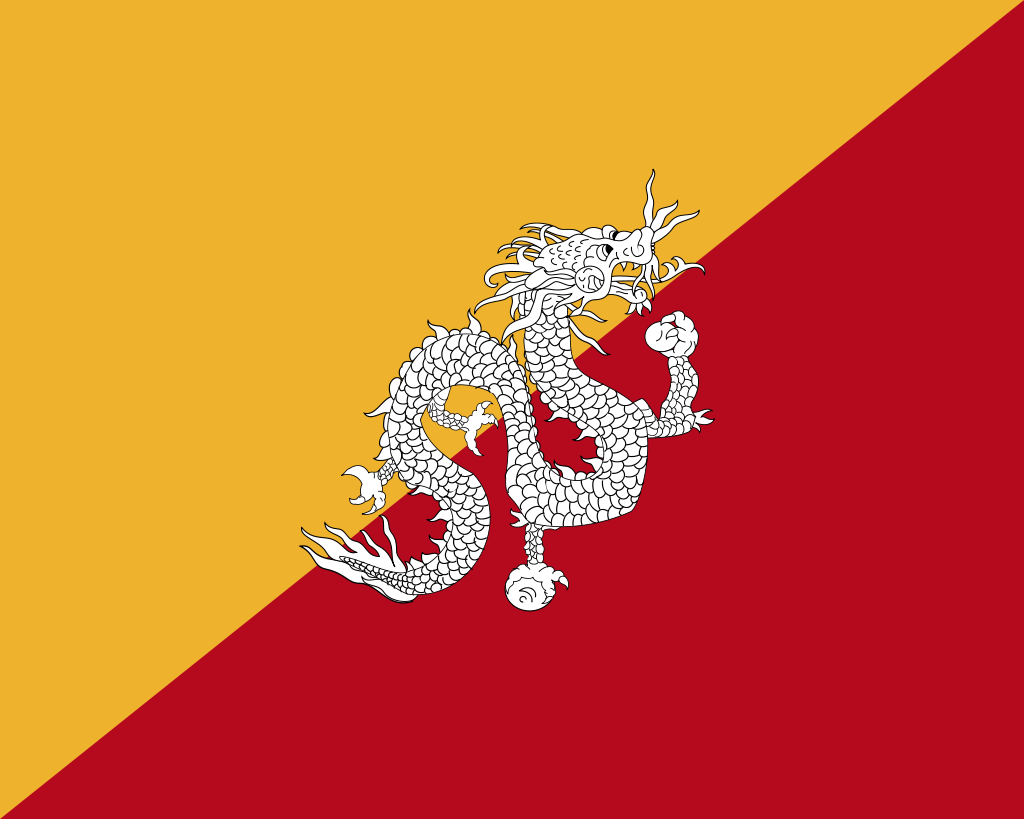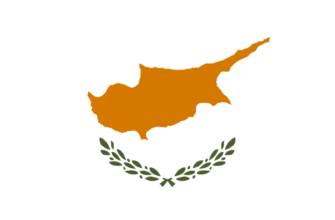The national flag of Bhutan is a rectangular cloth with two bright triangles and a white dragon. The flag first appeared in the nineteenth century, but has since undergone some changes. Each color and element on this flag is used for a reason: in one way or another, they characterize a given state. And now about each of its elements and the history of creation in a little more detail.
This is what the flag of Bhutan looks like:

History of the flag
Since its inception (i.e., since the 19th century) the appearance of the flag has changed several times. The oldest version of the cloth, used as the symbol of Bhutan until the mid-50s, differed from the modern one by a darker shade and the location of the dragon (he was facing the head in the opposite direction). And the shape of the cloth itself was closer to an equilateral rectangle. According to some reports, the developer of its new design was Mayum Choiying Wangmo Dorji in 1947.


The last change to the national banner was in 1969. Then the color orange appeared on it as a tribute to the Thunder Dragon monasteries.
The flag was finally adopted as the national flag in June 1972. This happened just at the time when King Jigme Singye Wangchuck, the founder of important reforms in the country, ascended the throne.
Synopsis! Bhutan is famous for its numerous monasteries and dzongs, and in the local dialect the name of the country means «Land of the Dragon.
Description
The national flag looks like a rectangular cloth (length and width in the ratio 3:2). The symbol of the country is diagonally divided into two main colors — dark yellow (at the top of the flag) and bright orange. On the border of two rectangular triangles or in the center of the cloth is a white dragon (the inhabitants of this country called his Druk), which firmly holds in his claws precious stones. The details of the mythical creature are carefully traced on a white background with black outlines.
Flag colors
The flag of Bhutan includes 3 colors:
- yellow;
- orange;
- white.
And each of them has a special meaning.
Meaning of colors and symbols of the flag
The colors and elements of the national banner have the following meaning:
- Yellow symbolizes royalty and the civil tradition.
- Orange symbolizes the Buddhist spiritual tradition. Both colors combine harmoniously with monarchy and religion.
- White is a symbol of purity.
- The dragon, shown in the center, symbolizes the name of the country (as in the local Bhutanese dialect it means «Land of the Dragon»).
- The gems in the claws of the dragon — refer to the wealth and priceless treasures hidden in the depths of the country.
- The growling mouth of the mythical creature symbolizes the strength of the people, ready to stand for their country to the bitter end.
In its original version (in the XIX century) the flag had only a yellow shade and a dragon in the center. It was not until the 60s that orange appeared on the cloth.
The national flag of Bhutan in its symbolism reflects the culture of the country and the aspirations of the people, safely reconciling religion (Buddhism) and royalty. And despite the changes in style, it is still used to this day for all land-based sites in the country. And the people of Bhutan treat their state symbol with special reverence and respect, honoring traditions and local customs.
General information about Bhutan
| Official language | dzong ke |
| Capital | Thimphu |
| Territory | 38 394 km2 |
| Population | 750 125 people |
| Currency | ngultrum |
| Phone Code | +975 |










I absolutely love the Bhutan flag! It’s so vibrant and full of meaning! When I visited Bhutan last year, seeing the flag fluttering in the wind made me feel so connected to the culture. The dragon design is just incredible! Such a beautiful symbol of strength and power!
I totally get what you mean! When I was in Bhutan, the flag caught my eye too. The dragon represents courage, and seeing it in person was powerful. It really made me appreciate their rich culture and history. That connection is unforgettable, right?
Absolutely! I felt the same when I visited Japan and saw the cherry blossoms. It was a stunning symbol of beauty and transience. That moment really made me appreciate their culture and traditions. These experiences stay with us forever, don’t they?
I absolutely love the Bhutan flag! The vibrant colors and fierce dragon are so exciting to look at! When I traveled there, seeing the flag flying high everywhere made me feel such a deep connection to their culture. It’s like a beautiful piece of art that tells a story!
I love the Bhutan flag! It reminds me of my trip there last year. The vibrant colors and dragon design really capture the spirit of the country. I felt so welcomed by everyone, and the flag perfectly symbolizes their rich culture and traditions. Such an unforgettable experience!